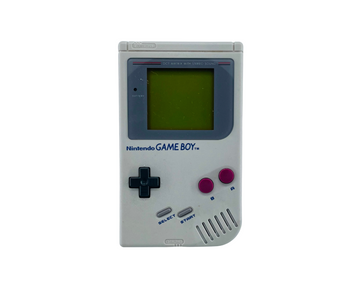The Gameboy Revolution: A Look Back at Nintendo's Iconic Handheld Console

In the late 1980s, the video game industry was booming. Gaming consoles like the Nintendo Entertainment System (NES) and the Sega Master System were dominating the market, but one company saw an opportunity to do something different. That company was Nintendo, and their answer to the console wars was the Gameboy.
Released in 1989, the Gameboy was Nintendo's first handheld gaming console, and it was an instant hit. Its portability, long battery life, and affordable price tag made it a popular choice for gamers on the go. But what really set the Gameboy apart from its competitors was its games.
The Gameboy's game library was a mix of original titles and ports of popular console games. The launch title, Tetris, was an instant classic and is still regarded as one of the best puzzle games of all time. Other early hits included Super Mario Land, which introduced players to a new version of Mario, and Kirby's Dream Land, which introduced players to the lovable pink puffball.
Over the years, the Gameboy's library continued to grow and evolve, with new titles being released regularly. Some of the most memorable Gameboy games include Pokemon Red and Blue, The Legend of Zelda: Link's Awakening, and Donkey Kong '94. These games, along with many others, helped establish the Gameboy as a cultural icon and a must-have for any serious gamer.
One of the things that made the Gameboy so special was its simplicity. Unlike the more powerful console systems, the Gameboy was limited in terms of graphics and sound, but that didn't stop it from being fun to play. The small screen and monochrome display may seem primitive compared to today's high-definition screens, but they were perfect for the time.
Another aspect of the Gameboy that made it stand out was its durability. The console was built to last, with a tough exterior that could withstand a fair amount of wear and tear. This was important for a handheld device that was meant to be taken on the go, and it's one of the reasons why so many Gameboys are still in use today.
Of course, no discussion of the Gameboy would be complete without mentioning its impact on the gaming industry as a whole. The Gameboy paved the way for future handheld consoles, including the Nintendo DS and the Sony PSP. It also inspired countless imitators and knockoffs, some of which were actually pretty good.
But perhaps the most lasting legacy of the Gameboy is the way it brought gaming into the mainstream. Before the Gameboy, video games were seen as a niche hobby, something that only a small group of enthusiasts were interested in. But the Gameboy changed all that. Suddenly, gaming was something that anyone could do, anywhere they wanted. It was a revolution, and it helped make video games the multibillion-dollar industry it is today.
In recent years, there has been a resurgence of interest in retro gaming, and the Gameboy has been at the forefront of this movement. Many gamers who grew up playing the Gameboy are now adults with disposable income, and they're eager to relive the memories of their childhoods. This has led to a renewed interest in collecting Gameboy consoles and games, as well as a renewed appreciation for the console's design and simplicity.
